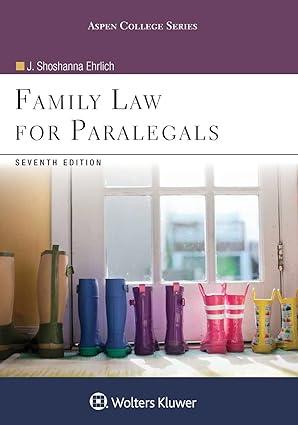In 1973, a revolution in the law of determination of parentage occurred when the Uniform Law Commissioners
Question:
In 1973, a "revolution in the law of determination of parentage" occurred when the Uniform Law Commissioners of the National Conference of Commissioners on Uniform State Laws ("ULC") promulgated the Uniform Parentage Act.... Rather than discriminating against children born outside of wedlock, the new act exclaimed "[t]he parent and child relationship extends equally to every child and every parent regardless of the marital status of the parent. " The ULC also advocated "rules establishing legal parentage for children conceived other than by sexual intercourse, [i.e., in vitro fertilization and artificial insemination] and possibly carried by a woman other than the legal mother." In 1982, the New Jersey Assembly and Senate considered omnibus reform and adopted the public policy embodied in the "Uniform Parentage Act." The State's legislative history reflects its concern about the economic responsibility that befalls the State when paternity is unknown. As the scientific boundaries of conception and fertilization have expanded, so has the definition of parent as recognized by the ULC when it issued revisions in 2000 and 2002. "Legal parenthood is more complicated" and can be, for example, the "one who carries a child to birth (rather than the one whose egg has been fertilized) ... [or] a man married to the birth mother at conception." The ULC may not have contemplated same-gender parents in its expanded definition of family, but it did understand that dynamic times dictated law sensitive to the advances of science and to evolving family structures.....
Questions:
1. What factors did the court rely on in reaching its decision?
2. How did the court read the UPA to support its decision?
3. At the end of the day, what was the actual result of the decision?
Step by Step Answer:






